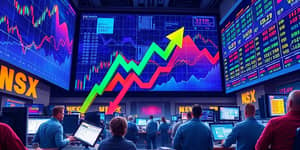
In today’s fast-paced financial markets, traders rely on sophisticated software to gain an edge. From advanced charting to algorithmic strategies, the tools available shape success. As we enter 2025, understanding which platforms excel can transform decision-making and performance. This in-depth guide explores market trends, features, and top solutions for smart traders seeking a competitive advantage.
Over the past two decades, technical analysis evolved from basic oscillators and moving averages on desktop programs to interactive cloud-based platforms. Early software required manual data downloads and limited customization. Today, traders access high-definition real-time charts and alerts on any device, while scripting languages and APIs allow bespoke strategies to run automatically. This evolution reflects the relentless pursuit of speed and precision in trading.
Modern platforms blend historical data, market sentiment, and predictive models. They support cross-asset analysis, enabling users to monitor stocks, forex, commodities, and cryptocurrencies within unified interfaces. Social features and community-driven insights further democratize expertise, fostering collective intelligence among retail and professional traders alike.
The global stock analysis software market is valued at approximately $2.5 billion in 2025, projected to soar to $7.2 billion by 2033 at a 12% CAGR. Alternative research cites a $1.2 billion valuation in 2023, anticipating $3.5 billion by 2032, driven by strong growth in North America and APAC.
As retail participation rises, brokers and technology providers invest heavily in intuitive interfaces, mobile apps, and social functionalities to attract and retain users. Institutional clients meanwhile demand robust analytics and secure execution pathways.
North America remains the largest market thanks to its mature financial infrastructure, widespread adoption of technology, and significant capital flows. The region’s CAGR of 11.5% through 2032 underlines a steady appetite for next-gen analysis tools among hedge funds and retail platforms alike.
Asia-Pacific exhibits the fastest pace of growth, exceeding 14% CAGR, spurred by rapid internet penetration and increasing retail investor sophistication in China, India, and Japan. Local fintech innovators tailor solutions for mobile-first audiences.
Europe balances innovation with stringent regulations, resulting in steady demand for compliant and versatile platforms. Emerging markets in Latin America and the Middle East also show potential as connectivity improves and financial literacy spreads.
Traders have access to a wide spectrum of platforms, each tailored to different skill levels and strategies. The table below highlights the top contenders in 2025.
Other noteworthy platforms include TradeStation, eSignal, NinjaTrader, and newer niche solutions promising advanced backtesting or alternative data integration.
Selecting software requires evaluating the core capabilities that drive performance. Below are the most critical features for modern traders.
Advanced platforms also provide risk management modules, portfolio analytics, and news sentiment overlays to keep traders informed and in control.
Understanding trade-offs enables traders to choose solutions aligned with their style, experience level, and capital allocation.
MetaTrader remains a staple for forex traders, offering free access and extensive advisor libraries, though its interface can feel dated. MetaStock excels in research-intensive workflows but carries a significant cost barrier.
Algorithmic trading and AI adoption represent the next frontier in technical analysis software. Platforms now incorporate machine learning to detect complex patterns and forecast market shifts. Automated bots can execute trades in milliseconds, often capitalizing on fleeting arbitrage opportunities across exchanges.
Sentiment analysis, driven by natural language processing, evaluates news, tweets, and financial reports to gauge market mood. Integrating alternative data—such as options flow or satellite imagery—further enriches signal quality. As these technologies mature, traders with the right tools stand to gain a significant edge.
When choosing software, start by clearly defining your trading goals, time horizon, and preferred asset classes. Leverage free trials or demo accounts to assess user experience, charting flexibility, and execution reliability. Test strategies with historical data to ensure robustness under different market conditions.
Consider the depth of educational resources and community support a platform offers. Engaging actively in forums and idea-sharing can accelerate your learning curve and expose you to innovative approaches. Evaluate broker integration to verify order speed and fee structures that align with your budget.
As trading platforms handle sensitive financial transactions, robust security measures are non-negotiable. Look for providers employing end-to-end encryption, multi-factor authentication, and regular security audits. Cloud infrastructures should offer redundancy and disaster recovery capabilities to minimize downtime.
Transparent uptime records and service-level agreements (SLAs) provide assurance that your tools remain operational during critical market events. Compliance with data protection regulations, such as GDPR or local financial authorities’ guidelines, further enhances trust.
Looking ahead, technical analysis software will integrate increasingly diverse data sources, from real-time social sentiment to geospatial indicators. Personalization through AI-driven interfaces will adapt analytics to individual trading styles. Niche startups will cater to sector-specific needs, offering specialized scanners for biotech, energy, or cryptocurrency markets.
The drive for innovation will also prioritize accessibility, making sophisticated analytics available to novice traders via simplified UIs and guided workflows. Meanwhile, institutional platforms will deepen automation, risk management, and compliance features to support large-scale decision-making.
Ultimately, the platforms that succeed will balance cutting-edge technology with intuitive design and unwavering reliability, empowering traders to navigate volatility and capitalize on emerging opportunities.
In an era defined by speed and data abundance, selecting the right technical analysis software can be the difference between consistent profits and missed opportunities. By understanding market growth, comparing leading platforms, and embracing automation and AI, traders across all levels can enhance their decision-making. As the industry evolves, those who adapt to new tools and methodologies will position themselves at the forefront of the smart trading revolution.
References













